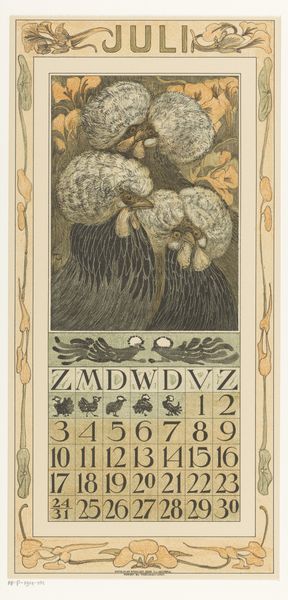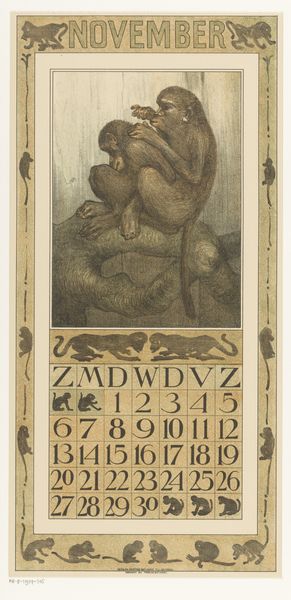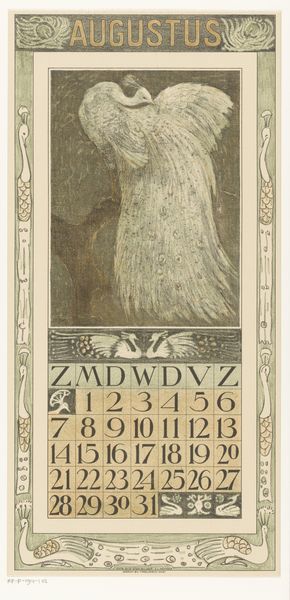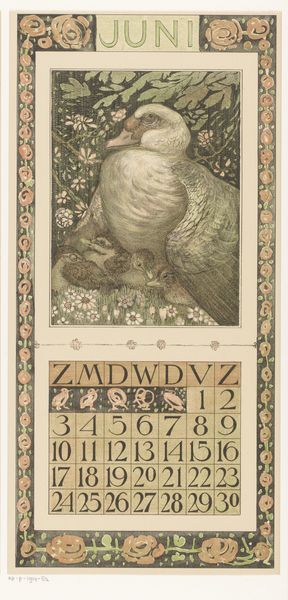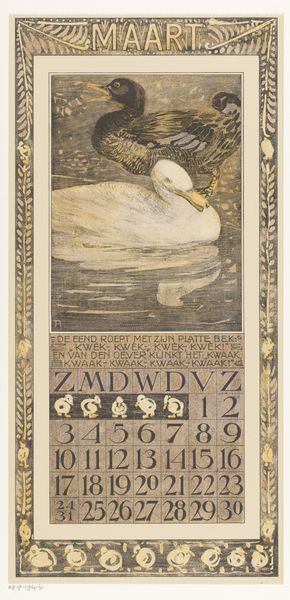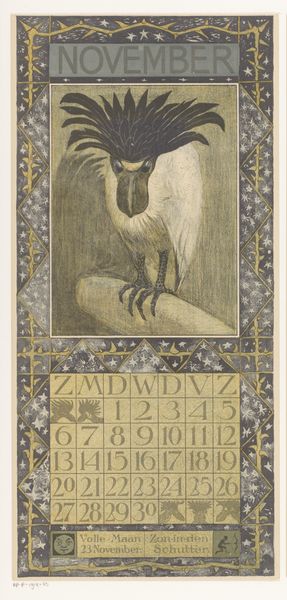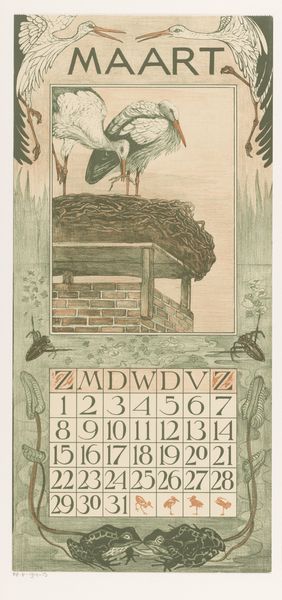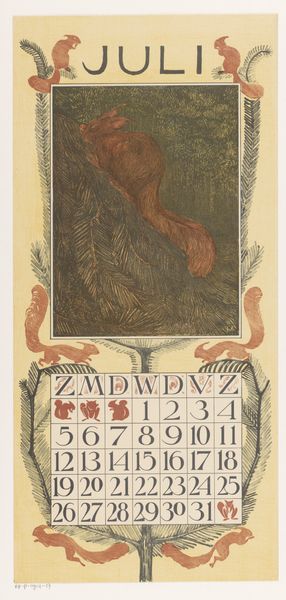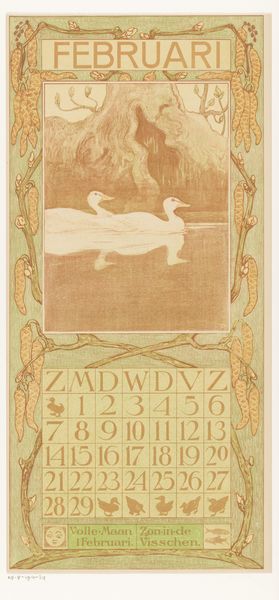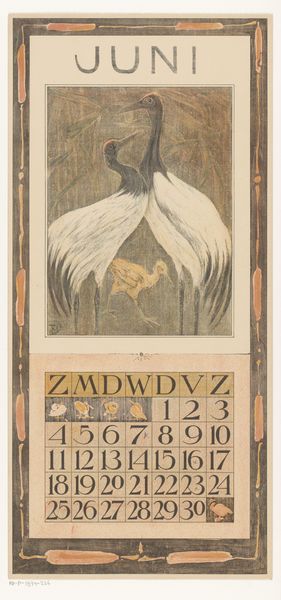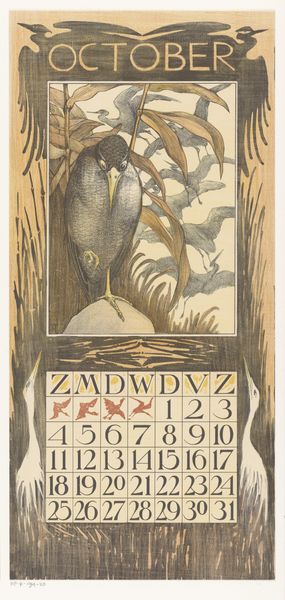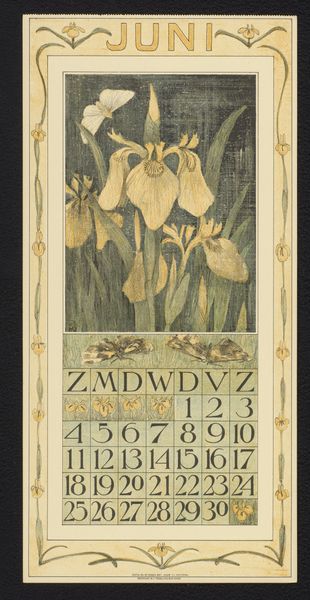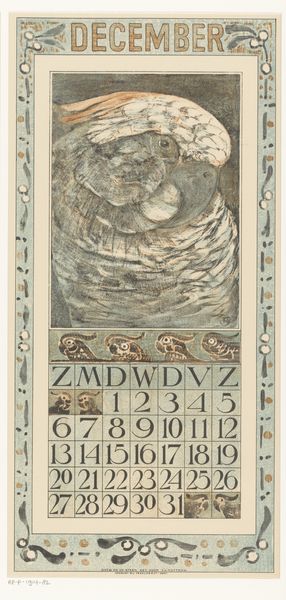
Kalenderblad voor maart 1910 met een paar duiven in een raamkozijn 1909
0:00
0:00
drawing, paper, ink
#
pattern heavy
#
drawing
#
natural stone pattern
#
art-nouveau
#
loose pattern
#
landscape
#
figuration
#
paper
#
geometric pattern
#
ink
#
tile art
#
subtle pattern
#
repetition of pattern
#
pattern repetition
#
layered pattern
#
combined pattern
Dimensions: height 440 mm, width 212 mm
Copyright: Rijks Museum: Open Domain
Curator: This is Theo van Hoytema’s "Kalenderblad voor maart 1910 met een paar duiven in een raamkozijn," or Calendar Page for March 1910 with a Pair of Pigeons in a Window Frame, created in 1909. It’s a lovely drawing rendered in ink on paper. Editor: It evokes a sense of quiet domesticity. The soft greys and browns, the tender pigeons—there’s an intimacy to the scene. It feels like a glimpse into a very private, comforting space. Curator: Indeed. Van Hoytema was deeply engaged in the visual language of his time, especially Art Nouveau, and that informs everything here, from the stylized willow branches framing the calendar to the almost geometric rendering of the brickwork. His calendar designs are actually deeply symbolic, even subversive. Editor: Subversive? How so? To me, doves generally evoke peace, home, and serenity; this little tableau seems like a haven, a sort of...yearning for simplicity in an era of industrialization? The calendar grid only reinforces a very organized, practical approach. Curator: Precisely! By integrating themes of nature and domesticity into such a functional object, he was subtly challenging the dominant values of industrial society. In this period there were reformist social movements emerging, where visual language in art began speaking about societal inequity by addressing it with visual respite in times of increasingly toxic urbanization. And notice how he uses the symbol of the dove– it becomes more than just a bird. Editor: The pigeons certainly act as symbols here, clustered at the window—like a married pair seeking a refuge and safety within constraints, like that window! Perhaps a call for peace in a fragmented world. I suppose March, with its promise of spring, is fitting. Curator: Right. These calendars often engaged with very timely sociopolitical themes by encoding these elements within nature-driven images and symbolism. Think of Art Nouveau as visual cultural commentary wrapped in flowers and birds. The design isn’t just decorative; it’s a commentary. Editor: The way he weaves together functionality and this almost pastoral, symbolic imagery gives the calendar a lasting emotional and historical impact, a feeling that perhaps society could heal if only it would return to valuing some sense of simplicity and care. Curator: I agree completely. Hoytema asks viewers to actively engage with how their current society is functioning through themes, which, in turn, subtly critiques its flaws and provides inspiration for a new trajectory. Editor: It is quite fascinating when taking into account that the medium here, ostensibly, is just ink and paper! The complexity is woven between intention, symbolism, and implementation in the final form of an “innocent” calendar.
Comments
No comments
Be the first to comment and join the conversation on the ultimate creative platform.

